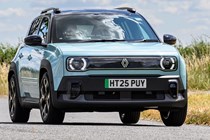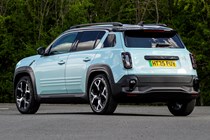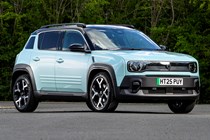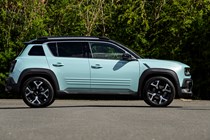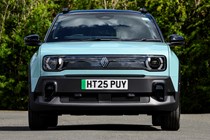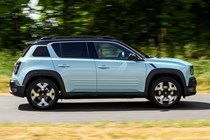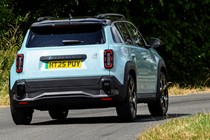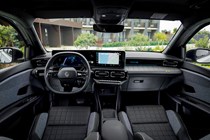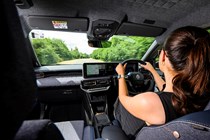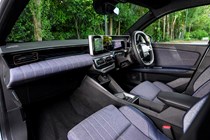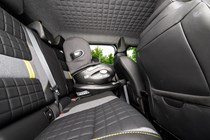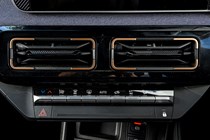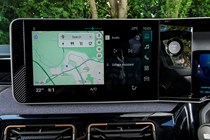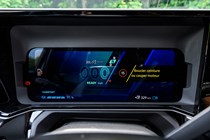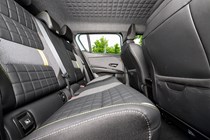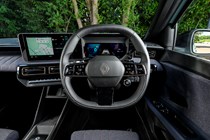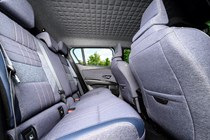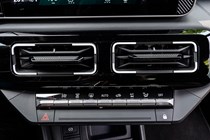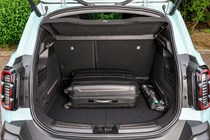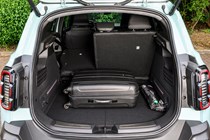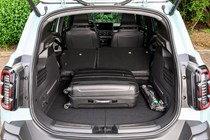
Renault 4 E-Tech engines, drive and performance
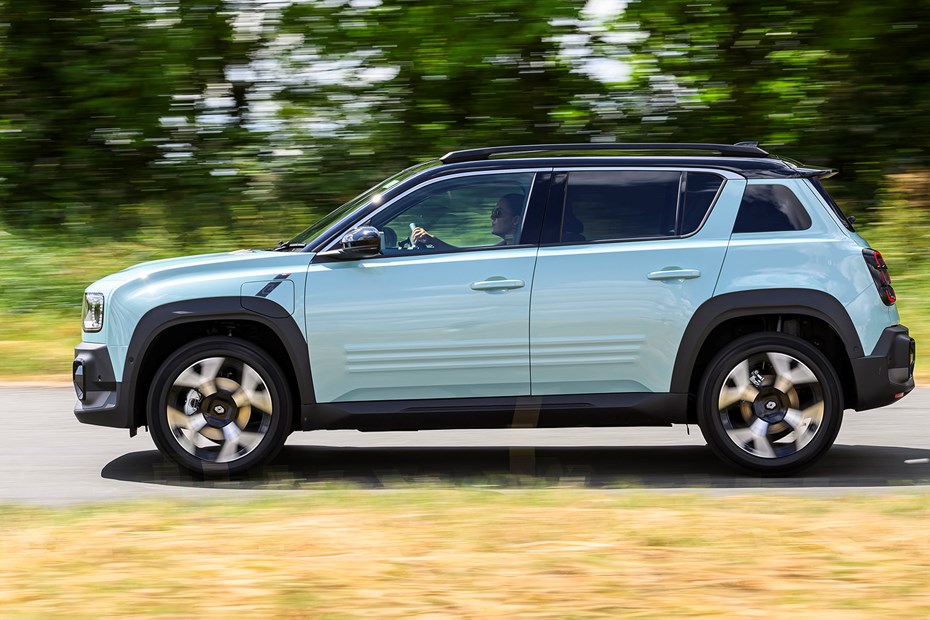
- Just the one battery size and motor available
- Not fast, but well-suited to all roads
- Front wheel drive only for now, single-speed automatic transmission
Renault 4 E-Tech electric motors and batteries
The Renault 4 E-Tech offers just the one powertrain, the same 52kWh battery and 150hp motor found in higher-spec Renault 5s. That translates to a brisk 0-62mph time of 8.2 seconds and tip speed of 93mph, with power delivered to the front wheels via a single-speed automatic transmission.
These are about average figures for this class and certainly nowhere near the silly 400+hp figures offered by top-spec variants of the Smart #1 and Volvo EX30. Remember however that the 4 is fairly light for an electric SUV at 1,462kg, which means it never feels slow off the line. It’s a similar story to many electric cars, initial acceleration is rapid, but it quickly runs out of puff the quicker you go.
There are four selectable driver modes available on Techno and Iconic models, which adjust how the 4 performs. Sport mode unlocks all the power and drains the battery quicker, while Eco restricts acceleration in the name of preserving battery juice – although fully depressing the accelerator will give you full power. We’d recommend leaving it in Comfort mode for the nicely balanced performance-to-energy-use ratio.
What’s it like to drive?
- More fun that you may expect
- Nippy around town, collected on the motorway
- Don’t let the ride height fool you, it’s no off roader… yet
The tall roof, generous ride height and boxy shape make the driving experience something of a surprise. Renault has made the suspension softer than the 5’s but not by much, so it turns in more keenly and corners flatter than you might expect. Quick, reassuringly weighted steering and predictable brakes make it a satisfying drive.
A MINI Aceman is more agile and adjustable with a punishing ride the major disadvantage. The 4 is much more compliant whilst offering good body control, and while surface imperfections like potholes made themselves known throughout the cabin, it’s never unpleasant. An e-C3 Aircross is comfier still but at the expense of handling.
Acceleration can’t match the quick MINI or ridiculously rapid Volvo EX30, and that’s absolutely fine. The 4 feels usefully more muscular than an Avenger, Mokka, e-2008 and e-C3 Aircross and never once felt out of its depth or skittish. It’s usefully brisk off the line so busy toll booths and short slip roads proved no issue, and the 4 is also happy to whizz along at motorway speeds.
Even at these speeds the motor’s whine barely registers. That’s partially because of the door mirrors and windscreen pillars whipping up plenty of wind noise, with coarse surfaces generating lots of tyre roar.
Around town the 4 feels most at home thanks to its light low-speed steering, nippy acceleration and easy to judge dimensions that keep it feeling manageable and capable of darting wherever needed.
On our first drive in Portugal, we couldn’t help but take the 4 a bit off-road given the original’s utilitarian nature. The jacked-up suspension prevented any unwanted thumps and crunches from under the car on some beaten up tracks, although it certainly didn’t glide over the terrain.
The limiting factor was tyres as the efficiency biased rubber struggled with a gravel incline. Tellingly, one of Renault’s display 4s wore mud and snow tyres and engineers wouldn’t rule out four-wheel drive. A 4x4 concept version has also previously been showcased, showing a more rugged version of the 4 may be on its way. Sign us up.


